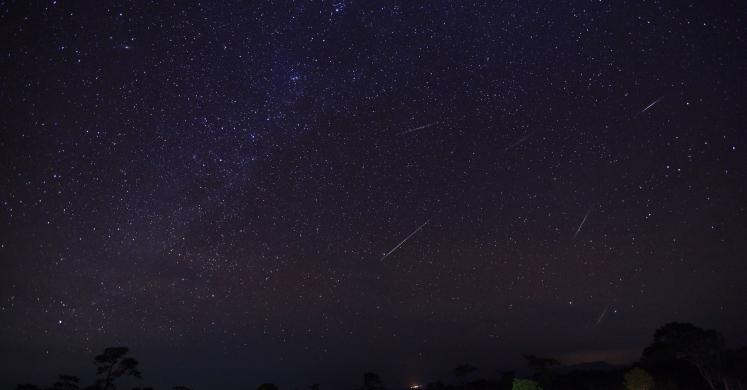Blog

#bioPGH Blog: Geminid Meteor Shower
 A resource of Biophilia: Pittsburgh, #bioPGH is a weekly blog and social media series that aims to encourage both children and adults to reconnect with nature and enjoy what each of our distinctive seasons has to offer. From the best times to plant seasonal flora and enjoy their peak blooms, to astronomical events and creatures to keep an eye and ear out for, Phipps will keep you in the know with what’s going on in our environment!
A resource of Biophilia: Pittsburgh, #bioPGH is a weekly blog and social media series that aims to encourage both children and adults to reconnect with nature and enjoy what each of our distinctive seasons has to offer. From the best times to plant seasonal flora and enjoy their peak blooms, to astronomical events and creatures to keep an eye and ear out for, Phipps will keep you in the know with what’s going on in our environment!
With this weekend’s weather taking a turn for the warmer it’s the perfect opportunity to head outdoors to catch one of the year’s best meteor showers, the Geminid meteor shower. Commonly referred to as “shooting stars,” the Geminids are actually debris from a long extinct comet known as 3200 Phaethon. Of the annual debris streams that earth passes through, Phaethon’s is the largest and also produces one of the strongest meteor showers. It is also one of the most reliable meteor shower displays, coming in second only to the Perseid meteor shower that takes place in August. While the Geminid meteor shower lasts a couple of weeks, the best viewing of the meteor shower will begin at 10 p.m. EST on Sun., Dec. 13 and will last until 6 a.m. on Mon., Dec. 14. However, you don’t need to stay up late to view this meteor shower as “shooting stars” can be observed as early as 8:30 p.m. on Sunday, when the constellation of Gemini is well above the horizon.
Connecting to the Outdoors Tip: Did you know that the Geminid meteor shower was named this because the meteors appear to radiate from the constellation of Gemini? Consider taking advantage of one of the many free stargazing apps available for smartphones and tablets and step outside this Sunday to an open area with few lights to view the Geminid meteor shower. For a little break from technology and a bit of challenge, you can also very easily construct your own star wheel and use it to help you identify stars and planets via alignments alone. If you have little ones, practice identifying constellations with them with a printable deck of fifty-two “star cards” and test their knowledge on the night sky by seeing if they can spot the constellation of Gemini on their own (fun for adults, too)!
Continue the Conversation: Share your nature discoveries with our community by posting to Twitter and Instagram with hashtag #bioPGH, and R.S.V.P. to attend our next Biophilia: Pittsburgh meeting.
Additional Resources:
Stargazing: Geminid Meteor Shower - Pittsburgh Post-Gazette
Five Fun Facts for the 2015 Geminid Meteor Shower - NASA
Make a Star Wheel - Sky & Telescope
Introducing “Star Deck”: It’s All in the Cards - Sky & Telescope
Star Charts Got You Confused? Worry No More! - About.com

